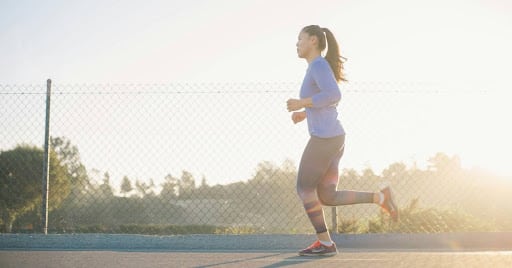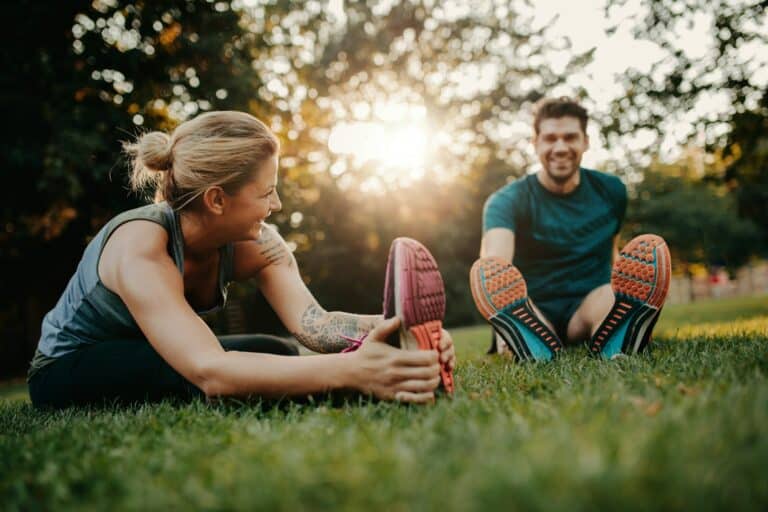Many physical fitness enthusiasts often fail to realize the importance of warm-up exercises. It allows for a gradual shift from rest to intense exercise, which gets the body ready for the impending demands. Proper warming up becomes specifically important in that; it increases blood flow in muscles. Such improved circulation is about more than just supplying extra oxygen and nutrients but also minimizing the risk of injury. Cold and tight muscles are more prone to possible strains and tears. This lessens their resistance against sudden, explosive moves and makes them more amenable to damage, while a warm-up stretch gently prepares them accordingly.
Moreover, a good warm-up session primes one psychologically for a tough workout. Apart from loosening muscles, it also helps lubricate joints, improve flexibility, and gradually speed up the heart. Therefore, the body and mind are readied for tougher activities that follow, allowing for better results from any training session. Whether one is weightlifting, running or doing high-intensity interval training (HIIT), a thorough warm-up ensures that the body does not experience shock but grows into top performance mode smoothly. Not only does it make the routine efficient, but it promotes long-term joint health and, hence overall well-being.
- Child’s Pose
Balasana, or the child’s pose, is a gentle stretch that focuses mainly on the back, hips, thighs and ankles. Start by kneeling on a mat with your toes touching and knees apart at a hip distance. To begin with, exhale as you slowly lower your torso between your knees, making sure your palms are facing down and arms extended in front of you. Gently touch the floor with your forehead. During this exercise, depending on one’s limberness, one should place his or her chest either comfortably between or on the thighs. Always keep your arms stretched out straight and active, which helps elongate your spine and shoulders, thus providing a gentle stretch along the sides and back of the body.
Deep rhythmic breathing is recommended while in Balasana. Breathe so that you feel as if you were lengthening your spine during each inhale. And during each exhale, try to relax more in the position by getting deeper into it. The hands can remain stretched forward, or they can be placed next to one’s body but with their palms facing upwards towards the feet. Hold this pose for 30 seconds to several minutes until it no longer feels comfortable, depending on personal preference. It is good for calming the mind and reducing stress; it also gently stretches and relaxes muscles in the back and hips. Always move out of this position delicately, especially if you experience any knee or back problems.
- Cat/Cow
For warming up the spine and relieving tension in the back and neck, Cat/Cow stretch is an excellent fluid movement. To start, put yourself down on your hands and knees on a mat, making sure that your wrists are right under your shoulders while your knees are under your hips. Your spine should be in a neutral tabletop position from which it will begin. Slowly lower your back as you breathe in by raising your pelvis and bringing your head and tailbone towards the ceiling. This is termed as the Cow position. This part of the stretch requires you to slightly engage the abdominal muscles to protect your lower back during movement.
When you breathe out, curve your spine upwards towards the ceiling while tucking in your tailbone and bringing your chin towards your chest. This is referred to as the Cat Position. During this phase, focus on fully engaging your back muscles and gently stretching the spine. The transition between Cat and Cow should be fluid and linked with your breath: inhale as you move into Cow and exhale into Cat. This sequence can be repeated several times, ideally for at least one to two minutes. The cat/cow stretch is not only physical exercise but also encourages mindfulness as well as concentration, where movements become synchronized with breathing. Many yoga practices consider it a must-do thing that warms up the body before proceeding into more vigorous exercises or workouts.
- Downward Dog
The Downward Dog, also known as “Adho Mukha Svanasana”, is a highly popular yoga pose with various stretching benefits, especially for the legs, back, arms and shoulders. Begin this stretch by placing your hands on the mat under your shoulders and your knees under your hips. Then curl your toes under and raise your hips up and back while straightening out your legs as much as possible. Consequently, you should create an upside-down V-shape with your body. Additionally, make sure that you press down into the mat with feet hip-width apart and hands shoulder-width apart.
In the Downward Dog pose, it’s important to distribute weight evenly between hands and feet. This posture stretches the entire back by elongating and straightening out the spine. Your head should remain in line with your arms while directing your gaze towards the floor beneath you; allow neck muscles to release. Maintain this position for several breaths while attempting to intensify the stretch in subsequent exhales when you feel the tension release from hamstrings, calves and shoulders alike.
- Jumping Jacks
A jumping jack is one of the old-style exercises that work on your cardiovascular system. To do this, stand with your feet together and your arms hanging by the sides. Afterwards, jump while lifting your hands over the head and spreading out your legs to form an “X” shape. Finally, restore the starting position by landing with both feet together and then lowering hands.
Jumping jacks are a beneficial warm-up exercise as they involve all body muscles and increase heart rate. This prepares the cardiovascular system for exercise and helps to loosen up shoulder and hip muscles before workouts. Different fitness levels may require various adaptations to this practice, with additional versions available for increased intensity. Make sure you do jumping jacks during warm-up so that you can improve on overall fitness levels in your body.
- Full Leg Stretch
The Full Leg Stretch is an easy yet effective limber created specifically for hamstrings and lower back. Initially, sit on the floor with your legs stretched out in front of you. Maintain a straight posture where you sit up tall with your back in actual position and shoulders relaxed. Make sure that your toes are directed upwards.
Then, gently hinge at your hips and reach forward towards your toes. Your purpose is to get as far as you can while keeping a flat back. Avoid rounding of your spine. In line with flexibility, one may hold onto their ankles or even feet. Hold this pose for 15 to 30 seconds while taking deep breaths through the nose. This stretch increases hamstring and lower back flexibility, which can be included in a warm-up routine to prepare the legs and lower back for more intense exercises that will follow later on.
- Quad Stretch
You should always perform the stretch in a slow and mindful manner. Now, move slowly into the stretch position until you feel a slight pull, perhaps a 7 out of 10 on the scale of discomfort. The aim is to activate the muscle with no pain or discomfort. A sharp pain or any discomfort at all means you have gone beyond what is appropriate for that stretch, and it is necessary to come back immediately to avoid pulling the muscles or any injury.
Once you find the right amount of tension, hold the stretch for 20 to 30 seconds. At this point, concentrate on relaxing and taking deep breaths. You will have deep breaths, which will help you to stretch more effectively by releasing tension. By keeping the stretch for this period, it allows muscle fibers to gradually lengthen and enhance flexibility. Remember that persistence and regularity are essential factors that ensure stretching workouts produce meaningful results.
- Arm Swings
Simple and effective, Arm Swings are an exercise that can be used to warm up the upper body. Start by standing with your feet apart at shoulder width, knees slightly bent, and arms outstretched sideways. Then, fold your arms across your chest quickly and reverse them as far as they can go without you feeling any pain. This repetitive movement from side to side is beneficial in increasing blood circulation in the arm muscles, releasing muscle tension in the shoulders as well. To prepare for a variety of exercises like gym workouts or athletic pursuits, incorporate Arm Swings into your warm-up routine.
- Knee Lifts
If you want to help with knee pain, incorporate leg lifts into your routine. To begin with, lie on your side with the legs straight, using the forearm to prop up the head. To do this exercise, extend your legs out straight and gently lift the upper one towards the ceiling; hold it there for a moment at its highest point of rise, then lower it back down to where you started. Perform this move several times on one side before switching sides. The leg lifts strengthen your knees’ stabilizing muscles, hence reducing pain and improving mobility.
People suffering from knee pain may benefit greatly from these simple leg lifts. They focus on specific muscles responsible for knee movement and better blood flow. If you do this, you will realize you are more flexible and powerful before you even start the real workout. Including them in your regular routine would be a useful way of managing and relieving pain in your knees.
- Lateral Lunges
To improve your lower body flexibility and engage leg muscles, you can try lateral lunges. Stand with your feet hip-width apart, then take a long step sideways using your left foot while keeping the right one in its original position. During this movement, bend your left knee, push out your hips and go down until the left knee makes a 90-degree angle. The controlled action should last about two seconds. Finally, return to the starting pose by pushing off with your left foot. Lateral lunges are exercises that can help to focus on inner and outer thigh muscles, whereas they also strengthen quads and enhance hip mobility. By incorporating them into your fitness program, you are likely to boost both lower body flexibility and leg strength at large.
- Toe Reaches
A good approach for one to improve the flexibility of hamstring muscles and overall mobility of the leg is by doing the hamstring stretch using a strap. Start by lying flat on your back on the floor with a belt or yoga strap nearby. You should place the right foot in the strap, ensuring that it is secure but loose enough not to hurt. Throughout stretching, keep your left leg straight out and flat on the floor.
While keeping your leg straight and pressing your back down hard onto the floor, slowly lift up your right leg using a strap until you start to feel it stretching your hamstring. It is necessary to gradually take a number of steps in order to avoid straining. Hold this stretch at a point of slight discomfort for about 30 seconds while concentrating on taking long, deep breaths. This stretch should be repeated three times with each leg as part of a regular stretching routine.
In order to prevent injuries and improve performance, it is important to carry out a proper warm-up and stretching routine. Exercises such as jumping jacks will get your blood flowing and ready your body. To improve flexibility, one can try stretches like Child’s Pose, Cat/Cow, and Quad Stretch. These focus on particular muscle groups, lessen stress and relieve discomfort. Better mobility or hamstring flexibility are some of the benefits of doing these exercises. Do them slowly, hold the stretch for some seconds, and you will have a more injury-resistant body.


